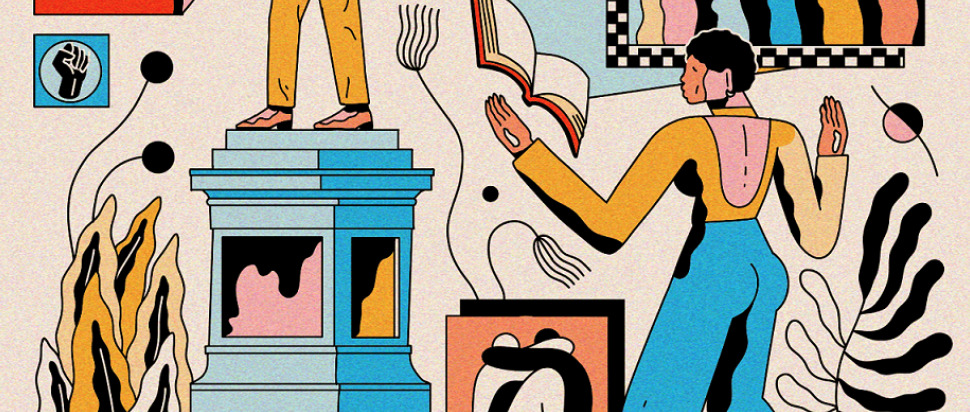Walking back with CRER
We speak with CRER about anti-racism, walking through local history, and the importance of understanding Glasgow’s past
“If you have that understanding of the past and of how we've ended up with institutional racism, you're more likely to be able to counter institutional racism and fight against it in the present day as well,” explains Nelson Cummins, Communities and Campaigns Officer at CRER (Coalition for Racial Equality and Rights). The anti-racist organisation seeks to promote the rights of Black and minority ethnic communities across Scotland and eliminate racial harrassment and prejudice. Its historical walking tours of Glasgow – organised by Cummins and led by himself and colleague Yasmin Luqman – are key to this work.
CRER’s walking tours map Glasgow’s history with colonialism, slavery, and abolition by taking participants around the city – the statue of David Livingstone, the Gallery of Modern Art, and High Street, to name a few stops. They’ve got a history of their own, running for a couple of decades, having been started back when CRER was known as the Glasgow Anti-Racist Alliance. Now the tours run once a week during October (the UK’s Black History Month) and upon request during the rest of the year, usually for education or work groups.
Primarily, the tours “explore the ties between Glasgow and transatlantic slavery, particularly in the wealth that's come into the city of Glasgow historically,” explains Cummins. “Scottish people were very active partners in the British Empire as well.” Scottish exceptionalism – the misguided notion that Scotland is less racist and was less involved in colonialism and enslavement than other nations in the past – all too often rears its ugly head. CRER’s walking tours are key to giving a fuller picture, one in which Scots aren’t portrayed as the innocent bystanders they never were. The tours also look to the abolition of slavery: the Black abolitionists who came to speak in Glasgow, as well as the abolition movments that existed within the city itself. It’s crucial that Glasgow’s complex history is seen in full.
A lot of Glasgow’s past (usually, the colonial parts) is too often glossed over in our education system. In almost every Scottish history textbook, Glasgow is heralded the ‘second city of the Empire’. The Clyde becomes something of a legend; the tenements home to the masses. However, there’s rarely little acknowledgement of what that title meant then and what it means now. Back then, Glasgow played an active role in the British Empire’s colonialism; now, the city continues to benefit from the wealth brought in by such violence.
Those who participate in the tours, some having lived here their whole lives, say that they learned a lot about Glasgow. “They find it quite empowering,” Cummins says. “I think it can help to strengthen people's connections with the city.” Glaswegians ought to know their own history – of how their city came to be, of what really went on here. Anti-racism, in the here and now, demands this greater understanding.
It’s important to note that CRER’s walking tours aren’t the only way to engage with this history, Cummins explains. The information is out there and it’s easily accessible online, in documentaries, in books, and in academic papers. It’s the same material that CRER engages with itself, updating and re-updating the tours as new research comes out.
“In any Black history work and any anti-racist work, the importance of local histories can't be missed,” Cummins says. CRER's walking tours are testament to this. In journeying through our collective local history, through Glasgow’s streets, we may better understand our past and our present.
See crer.org.uk for further information on CRER and find out more about the walking tours at blackhistorymonthscotland.org/whats-on/crer-walking-tours
